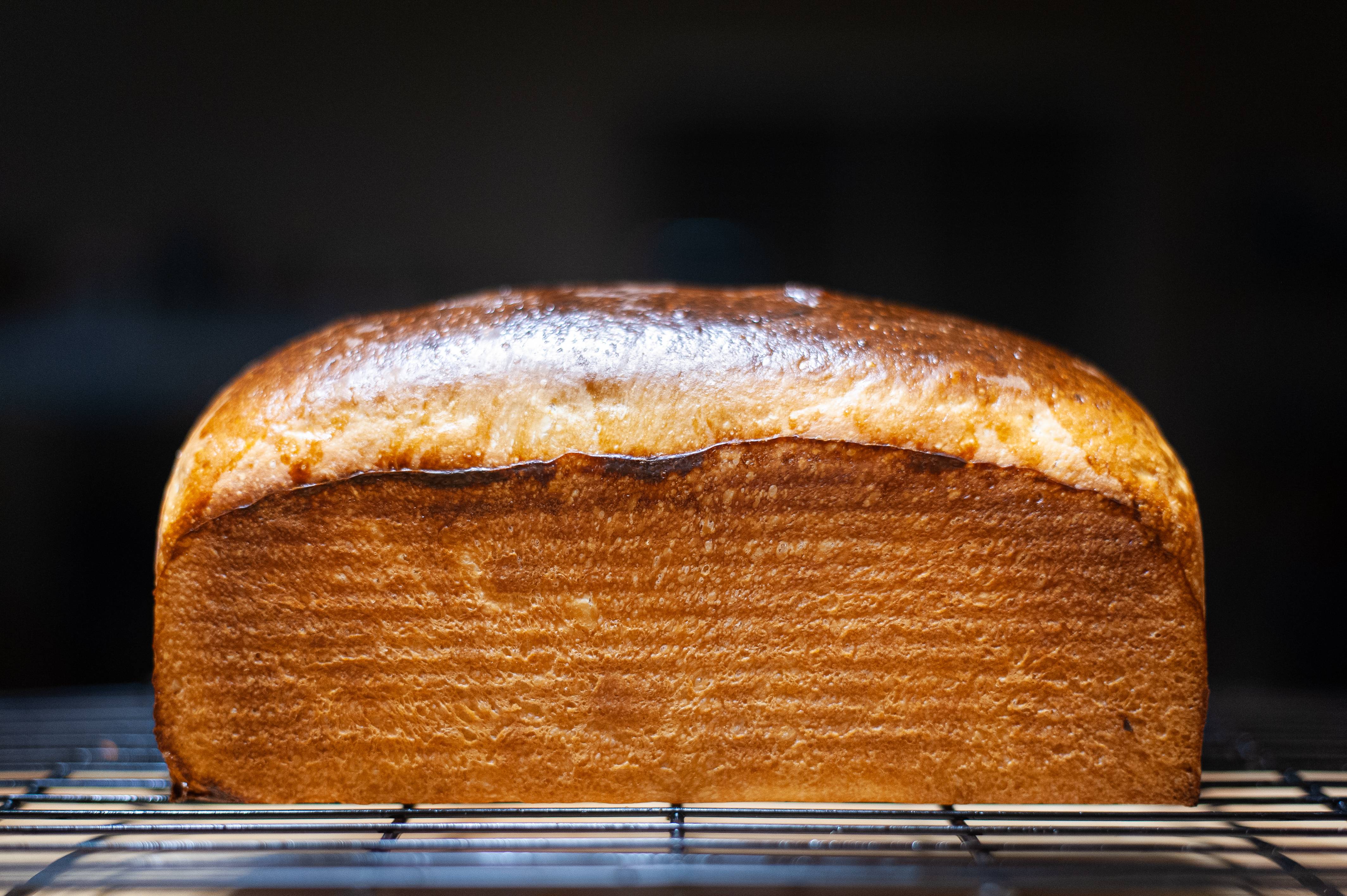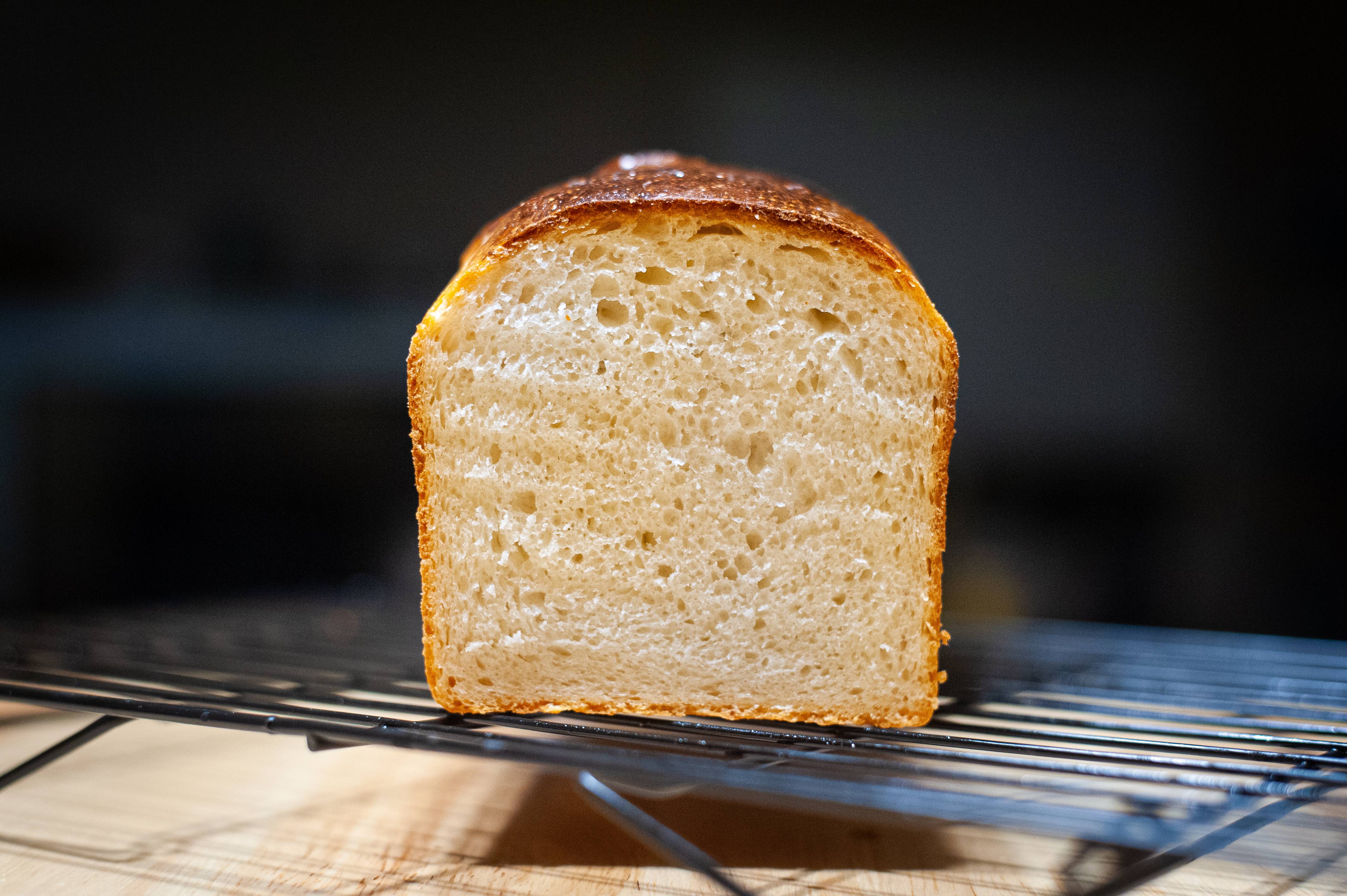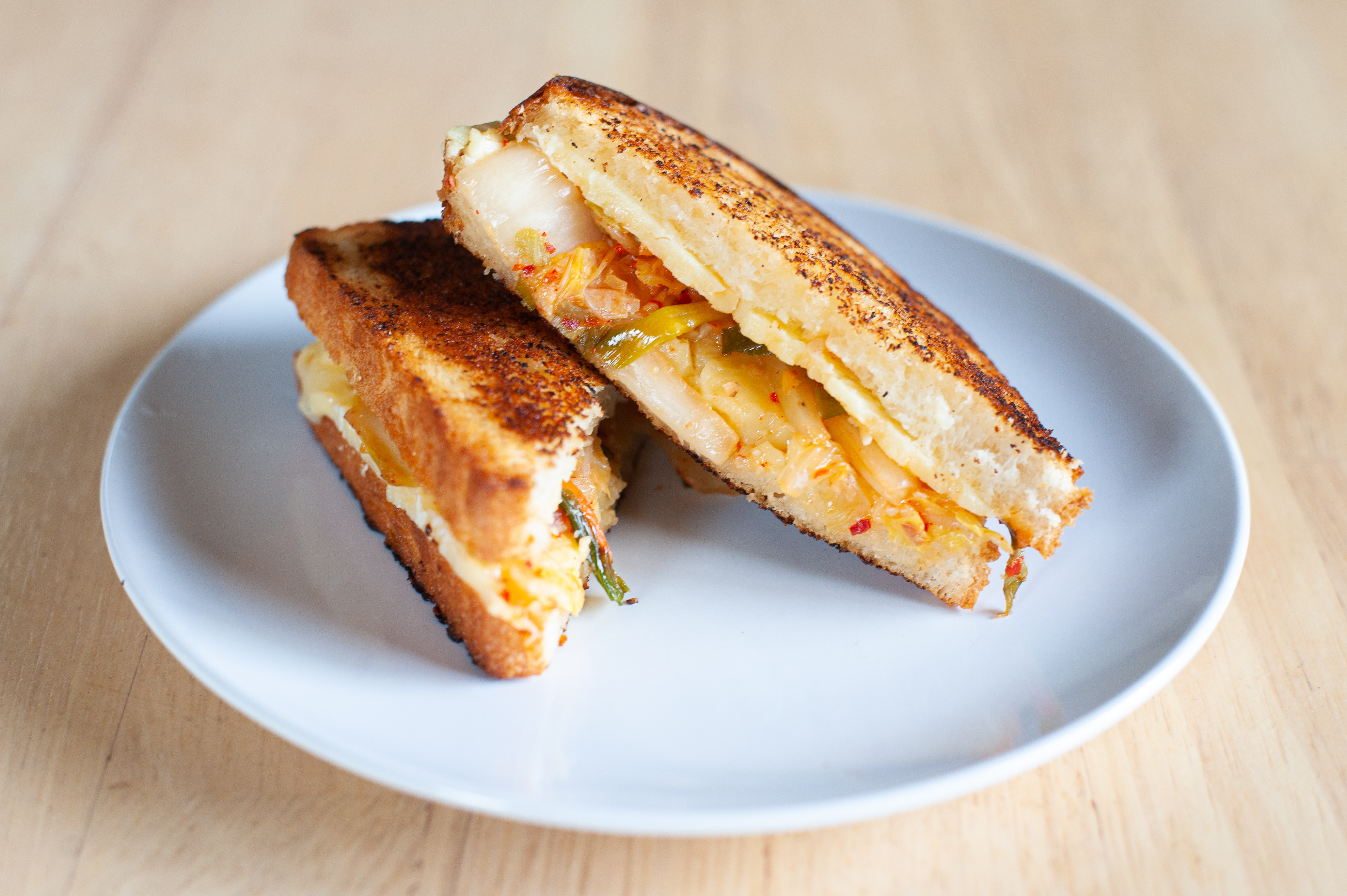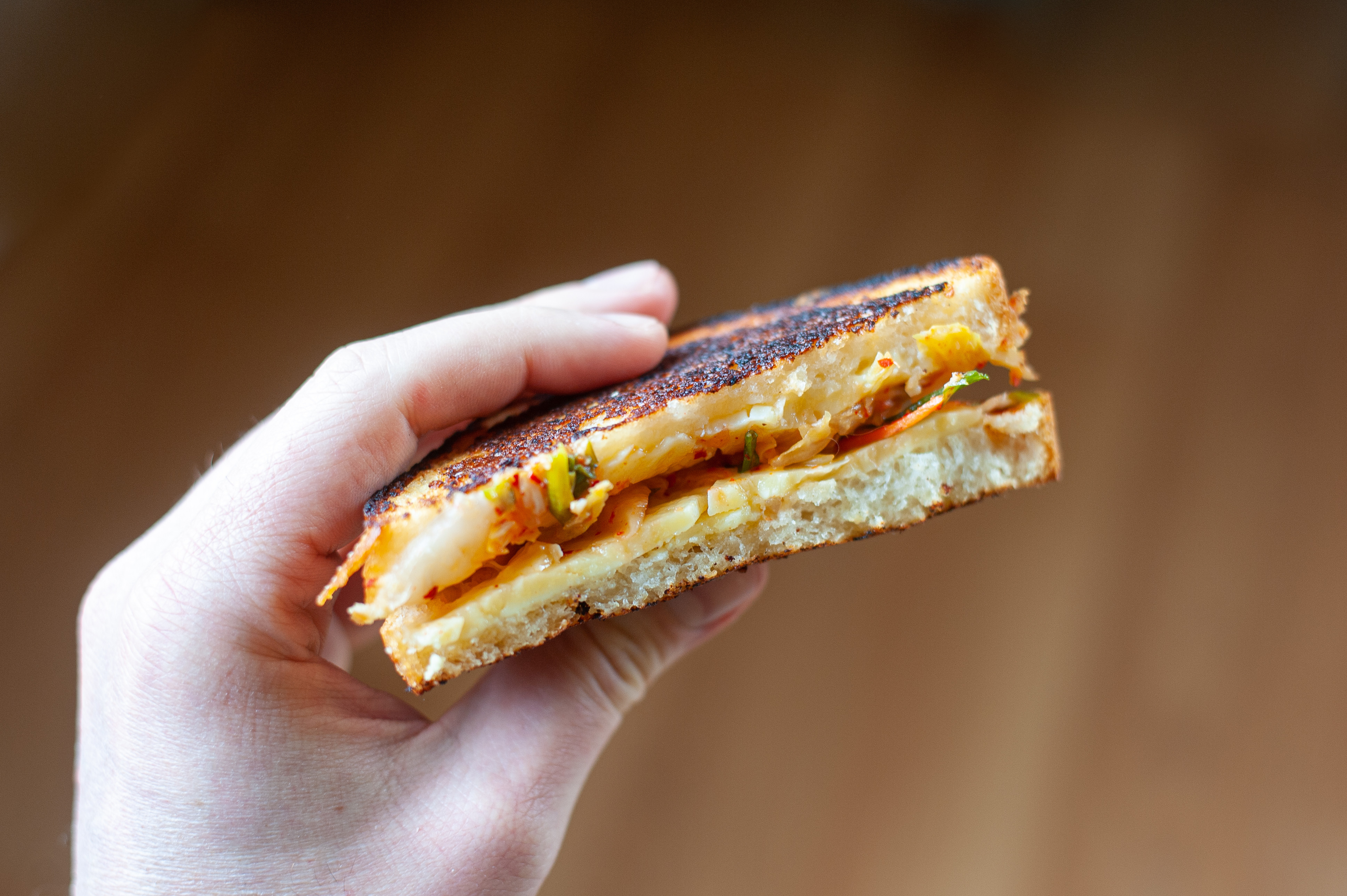user 246304
Well-Known Member
- Joined
- Aug 24, 2017
- Messages
- 8,290
- Reaction score
- 9,850
Just gorgeous Paul! Nicely done!
Thanks much!

Just gorgeous Paul! Nicely done!

View attachment 672878 Whole wheat sandwich loaf, because my cat likes it when we make tuna sandwiches, and the Barbarians didn't loot all the whole wheat flour.
Thanks for sharing your mastery with us. Looks great. I dont eat much whole grain bread, but this really helps me as I got a bag of stone ground wheat flour and have been trying to think about how much to add to the ap flour. My wife said it was literally the only bag of flour in the store. She found it in the bottom of the organic section 2 rows over from normal flour spot. Bobs red mill iirc. Half seemed like too much so I figured 2.5 ww to 4 ap for my recipe.I'm the kind of person who works on one thing and tries to master it before moving on to another thing, so I make a helluva lot of pounds of pain au levain, with the occasional miche or dark rye thrown in.
I like this one.
What I'm calling my "Type 80" flour is a custom blend of Central Milling's Organic Beehive (protein - 10.0-10.5%; Ash - 0.56%), and King Arthur's Whole Wheat, the WW sifted through No. 30 then No. 50 sieve. I get an 87% extraction on this whole wheat.
The Beehive is more what I'm accustomed to in French flours, which are lower in protein typically (also, they are measured differently - our 10.5% is more like their 12-12.5, because ours is on the basis of 14% moisture).
My blend is 62% of the Beehive & 38% of the sifted WW. This gives me a nice "bise" flour, a kid of midrange between white and whole wheat, great baseline imo for rustic breads.
81% "farine bise" or "Type 80"
19% King Arthur Whole Wheat
7.5% wheat germ
2% salt
85% hydration
2-stage levain build
lower levain inoculation of 15%
lower dough and fermentation temp than I usually do - 75F.
I rarely knead or machine mix any longer, at least not for wheat based doughs. I depend on folding to develop dough strength. Lower levain percentage and lower temps to put the brakes on fermentation a bit, given the whole grain in the dough. I prefer long and slow ferments anyway, much like underpitching in brewing, for its flavor developments.
Cloche bake per Tartine at 500F x 20 min., 450 x 10 min., lid off, I go a whole 30 min. longer as I like to take the crust pretty deep.
View attachment 672584 View attachment 672585





















My mouth is watering and I really don't like you right now. Don't worry it's me.....ok no it's you, but I'll work through it.Sourdough pain de mie --> kimchi grilled cheese w/ homemade kimchi, English coastal cheddar, miso butter




Hey man, I can provide recipes if you like.My mouth is watering and I really don't like you right now. Don't worry it's me.....ok no it's you, but I'll work through it.
Yes please. Recipes are always welcome round these parts. Even my non kimchi loving wife said yum as I read your sandwich description.Hey man, I can provide recipes if you like.
Yes please. Recipes are always welcome round these parts. Even my non kimchi loving wife said yum as I read your sandwich description.


Thanks for sharing your mastery with us. Looks great. I dont eat much whole grain bread, but this really helps me as I got a bag of stone ground wheat flour and have been trying to think about how much to add to the ap flour. My wife said it was literally the only bag of flour in the store. She found it in the bottom of the organic section 2 rows over from normal flour spot. Bobs red mill iirc. Half seemed like too much so I figured 2.5 ww to 4 ap for my recipe.

Beautiful loaf, care to share your technique? I know it may be in here but I have been elsewhere lately but was there from the start.Oh my friend, I don't feel master of much! Just always trying for it, as I feel we all lean on the line of masters before us and I try to get closer and closer to feeling that sense.
Man, I'm jealous of your find on the stone-ground WW! Absolutely impossible to find any WW here, at all. In fact, most of the time, no flour, unless I'm just coming at the wrong times. Crazy. Good for you guys.
I've got two 50 lb. bags coming from Central Milling - their "Artisan Plus" and "Hi Pro Fine WW". I generally tend for lower protein white flours, which is odd here in the States but more common in France. It works better with their techniques (like multi-step levain builds, for one. Also, the particular type of chew is a bit different from ours), but this Artisan white looks amazing and as it's their best seller, I believe, I wanted to work with it. The Hi Pro Fine promises great 100%WW breads - I presume so fine the husks don't cut across gluten strands too much, which is why high-whole-grain loves tend to have less volume than lower % whole grain loaves (though the taste righteous).
I've also got a few 5 lb. bags of whole wheat coming from King Arthur. Expensive as hell when you consider shipping, but it's my go to for sifting out husks and "middlings" as it's coarser than say, Bob's Red Mill.
Aw well - I think we're all going to have to make adjustments on just about all foodstuffs for the foreseeable future. Not a bad thing!
Thanks again, just trying to make good bread like us all. Great thread. Your bread above looks great, btw. Nice scoring!
Edit: Hadn't read your text before posting. Yeah, Bob is a pretty cool guy. His life story is something to read. I think there's even a bio book out on him, IIRC. And the comment on loaf volume - yep, as I mention above, that's fairly typical with me, too, though I hydrate heavier and give plenty of long fermentation to compensate somewhat.
Last nights' levain (I said I work on one thing. Sorry for the repetition!):
View attachment 673352
I like the scoring pattern! Though I'm unlikely to copy it. We all kind of develop our own habitual, signature scoring, it seems. (Mine, for wheat loaves, is usually a diamond pattern on round loaves, and a "sausage cut" on oblong. Rye loaves, I tend to use a docker. Sounds boring, doesn't it? I guess I'm more functional than decorative.)









Beautiful loaf, care to share your technique? I know it may be in here but I have been elsewhere lately but was there from the start.
Fed my starter just now andgoing to start another loaf in the morning and let it bulk ferment for a couple of days
Trying to get used to working from home. I think once I get in a grove I should be able to work into my schedule bread, briskets, pork shoulders and all those other multi-hour tasks that I normally can't get done when not working at home!Been a while, been very busy up to now, suddenly I have a lot of time on my hands.
How's things?


Anyone tried kveik for their sourdough starter?


The texture of that looks great. And an awesome rise. Your ww loafs always look great. Any thoughts on ratios of ww to white flour. Also was hoping you could lean me in the direction of a serviceable cutter form like yours. There are a lot of options not sure which work. Thanks.
Thanks for the tips. Not sure I ever thought about the flat blade side being a guide. No, I want a form though still, if not an electric slicer. Template, form, not sure what its called.@applescrap, you don't need a form to slice bread. You get to perfectly sliced bread the same way you get to Carnegie Hall! Tip: once you line up and start the knife through the bread, let it do the work. Don't try to direct it, concentrate on sideways pressure to keep the side of the blade flat against the cut surface of the loaf while just moving it smoothly back and forth, sinking under its own weight. If the side of the blade is held against a flat surface, it will go straight. I know that sounds pretty abstract at first, but it will come to make sense.
The texture of that looks great. And an awesome rise. Your ww loafs always look great. Any thoughts on ratios of ww to white flour. Also was hoping you could lean me in the direction of a serviceable cutter form like yours. There are a lot of options not sure which work. Thanks.
@applescrap, you don't need a form to slice bread. You get to perfectly sliced bread the same way you get to Carnegie Hall! Tip: once you line up and start the knife through the bread, let it do the work. Don't try to direct it, concentrate on sideways pressure to keep the side of the blade flat against the cut surface of the loaf while just moving it smoothly back and forth, sinking under its own weight. If the side of the blade is held against a flat surface, it will go straight. I know that sounds pretty abstract at first, but it will come to make sense.
For sourdough, you really want to let the wild stuff sing, so while I think it would make for an interesting yeasted bread, I wouldn't call it sourdough.
I have my own sourdough starter I use (mostly for pizza dough, tbh), I was just curious about kveik "sourdough". I'll have to mix some up was I would sourdough (flour, starter, water, salt). In wonder if a sponge would be necessary.
To put it simply, kveik (think “kuh-vike”, as a native speaker would pronounce it––not “kwike”) is a traditional Norwegian word for a type of ancient, domesticated yeast.
Garshol, a scientist and blogger from the Oslo area, single-handedly brought the spotlight upon kveik (pronounced “kwike”), a family of yeasts that has been handed down through generations of homebrewers outside Voss, Norway. He was introduced to it by farmhouse brewer Sigmund Gjernes, who considers kveik his family’s own strain. Gjernes invited Garshol to brew with him in the spring of 2014. While brewing, Garshol kept detailed reports and reflections on this hardy strain, capable of rapid fermentation at very high temperatures. It was these notes that inspired Shaner to propagate kveik for commercial use in the United States.
I have my own sourdough starter I use (mostly for pizza dough, tbh), I was just curious about kveik "sourdough". I'll have to mix some up was I would sourdough (flour, starter, water, salt). In wonder if a sponge would be necessary.
Cool. I was just saying kveik isn't sourdough, as it's made from cultured yeasts. It's a cultured strain, not a "sourdough" culture made from ambient yeasts and bacterias:
Yeah - sorry. I hadn't logged in when I initially replied and my autofill picked the wrong email. I've asked that the duplicate be deleted.Sorry - just see the two posts are the same. Are you the same person as Cock Robin?
Yeah - sorry. I hadn't logged in when I initially replied and my autofill picked the wrong email. I've asked that the duplicate be deleted.
I just recall that when we brew we mash to convert starches to sugars. I'm not sure if the yeasty beasties can do that on their own. Adding sugar to the dough would of course solve that problem, but if the goal is a sourdough-like bread, adding sugar defeats the purpose.
I think the major lifting is done my the things added to flour. Some of the pizza flour don't have it and that is why/how they can do the long ferments without it completely loosing it's structure. I know some yeast can convert starch but I don't think it is too common or normal for bread yeast. I had a diastaticus contamination which some can convert starches. That had me looking to see if I was polluting my beer from my sour dough starter. Had my starter tested and it came back negative for diastaticus.
I think the major lifting is done my the things added to flour. Some of the pizza flour don't have it and that is why/how they can do the long ferments without it completely loosing it's structure.
Here's my latest bread, about 10% of the flour (wholemeal wheat and stoneground rye) was turned into a poolish and I used milk that was on the turn for hydration.
View attachment 673639